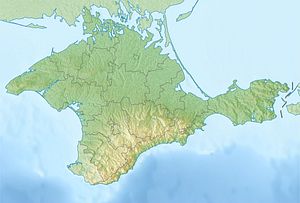One of the shocking lessons of the Ukraine crisis is just how weak the Ukrainian military was internally and how ill-allocated its resources were, considering Russia’s lasting interests in Crimea. Considering its neighborhood, Ukraine had very good reasons to remain perpetually mistrustful of its larger neighbor to the east, but it never quite got there. Viktor Yanukovych’s close ties to the Kremlin proved to keep Russia at bay temporarily; we now see that Ukraine – outside of Crimea – was ill-equipped to resist a Russian invasion.
Part of Ukraine’s military preparedness problems emerge from the fact it was and is financially destitute. Following the Crimean invasion, the new Ukrainian government resorted to crowd-sourcing funding for its armed forces via text message. Ultimately, only 6,000 combat-ready troops were available to mount the defense of some 600,000 square kilometers of Ukrainian land.
However, the bigger problem was that Ukraine in effect had all of its eggs in one basket in Crimea – a heavily militarized peninsula. When Russia invaded and Crimea-stationed Ukrainian forces did not respond, pending the referendum, it effectively guaranteed that what remained of Ukraine’s military strength would be immediately incapacitated. IHS Jane’s reports that the Ukrainian navy, for example, was effectively decimated by the Russian invasion – losing 12 of its 17 major warships to Russia. Additionally, 12,000 of its 15,450 naval personnel and 2,000 air force personnel were based in Crimea as well. According to IHS Jane’s, the last holdout Ukrainian battalion requested passage across the “border” with all their equipment and vehicles but was instead arrested by the Russians on March 24.
The heavy militarization of Crimea amounted to a forward position for the Ukrainian armed forces. Holding such a position during a time of peace only makes sense if one resists during a potential invasion. Obviously Ukrainian forces did not do this against the Russian invasion for a variety of reasons, but the political reasoning underlining the Ukrainian allocation of troops was unsound. Ukraine’s leaders – regardless of how close or far their personal relationships were with Vladimir Putin – should have remained permanently cognizant of Crimea’s vulnerability and Russia’s immense interest in preserving its foothold on the Black Sea.
Despite close relations between the two governments, Kiev has always had reason to remain skeptical of Moscow’s intentions for Crimea – the strategic importance of the territory was simply too high. However, instead of publicly airing this or approaching Moscow about it, Kiev chose to rely on assurances provided by both the West and Moscow that its territorial integrity would be preserved. The Budapest Memorandum (note: not a formal treaty), signed in 1994 by Ukraine, Russia, the United States, and the United Kingdom, guaranteed that the sovereignty and territorial integrity of Ukraine as an independent state would be preserved in exchange for it handing over its Soviet-era nuclear weapons and signing the Nuclear Non-Proliferation Treaty. The tit-for-tat made sense for Ukraine at the time and there was no reasonable belief by Ukrainian leaders that Russia would renege on the terms of the agreement without a severe backlash from the West.
Ukraine should have internally balanced against Russia but never did. The reasons are above all political. Militarizing against another state is often transparent and results in that state not owing you any favors; Kiev long relied on Moscow for its economic well-being. External balancing is often less transparent but also less reliable. Fortunately, most states – especially in the Asia-Pacific – don’t seem to be making the same mistake. Internal balancing against the rise of China is well underway across Asia. Alliances and partnerships can prove fickle and unreliable when push comes to shove; in the end, the only reliable instrument of preserving a state’s interests is its own armed forces. Ukraine’s experience showcases this all too well.

































